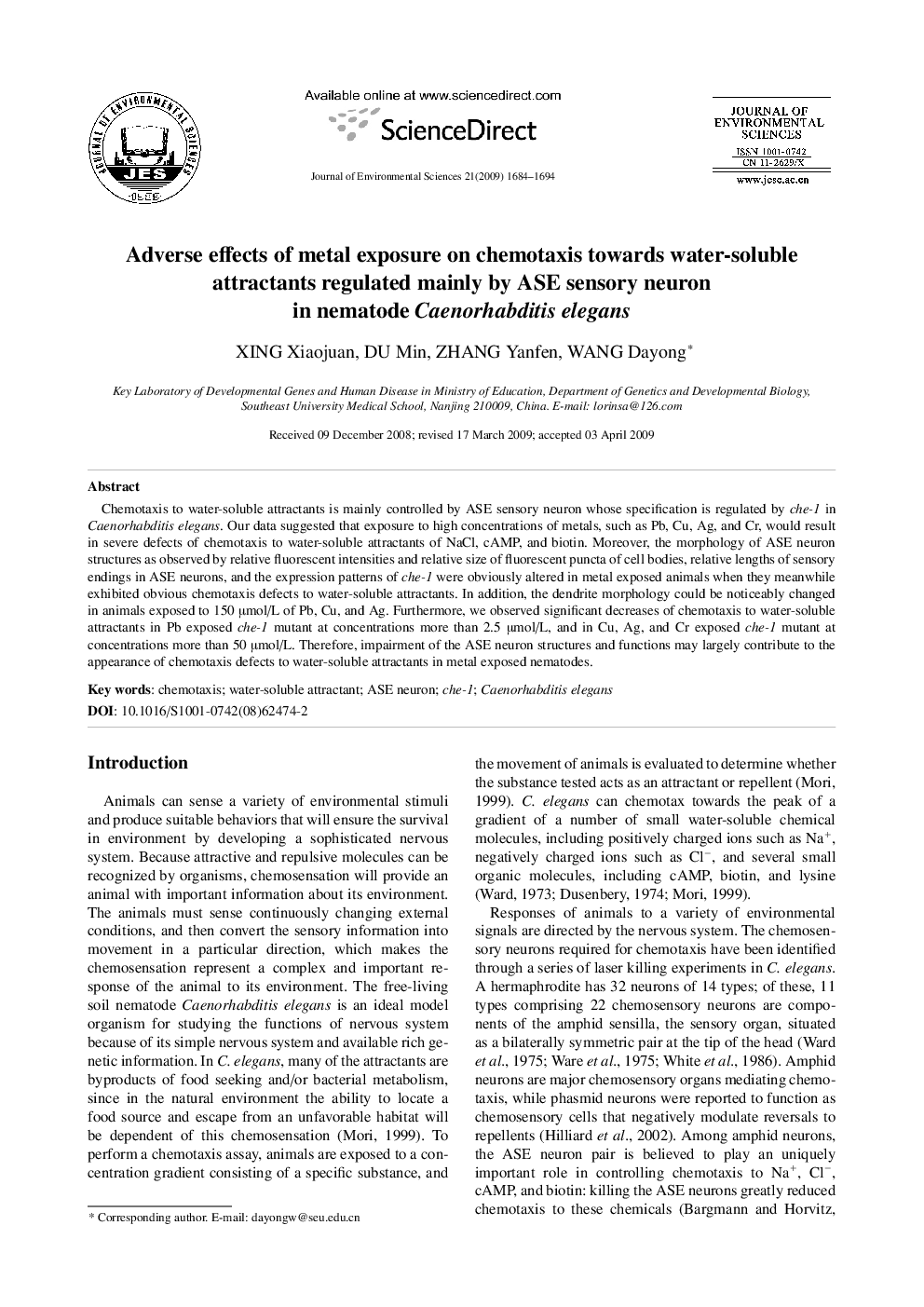| کد مقاله | کد نشریه | سال انتشار | مقاله انگلیسی | نسخه تمام متن |
|---|---|---|---|---|
| 4455364 | 1312515 | 2009 | 11 صفحه PDF | دانلود رایگان |

Chemotaxis to water-soluble attractants is mainly controlled by ASE sensory neuron whose specification is regulated by che-1 in Caenorhabditis elegans. Our data suggested that exposure to high concentrations of metals, such as Pb, Cu, Ag, and Cr, would result in severe defects of chemotaxis to water-soluble attractants of NaCl, cAMP, and biotin. Moreover, the morphology of ASE neuron structures as observed by relative fluorescent intensities and relative size of fluorescent puncta of cell bodies, relative lengths of sensory endings in ASE neurons, and the expression patterns of che-1 were obviously altered in metal exposed animals when they meanwhile exhibited obvious chemotaxis defects to water-soluble attractants. In addition, the dendrite morphology could be noticeably changed in animals exposed to 150 μmol/L of Pb, Cu, and Ag. Furthermore, we observed significant decreases of chemotaxis to water-soluble attractants in Pb exposed che-1 mutant at concentrations more than 2.5 μmol/L, and in Cu, Ag, and Cr exposed che-1 mutant at concentrations more than 50 μmol/L. Therefore, impairment of the ASE neuron structures and functions may largely contribute to the appearance of chemotaxis defects to water-soluble attractants in metal exposed nematodes.
Journal: Journal of Environmental Sciences - Volume 21, Issue 12, 2009, Pages 1684-1694